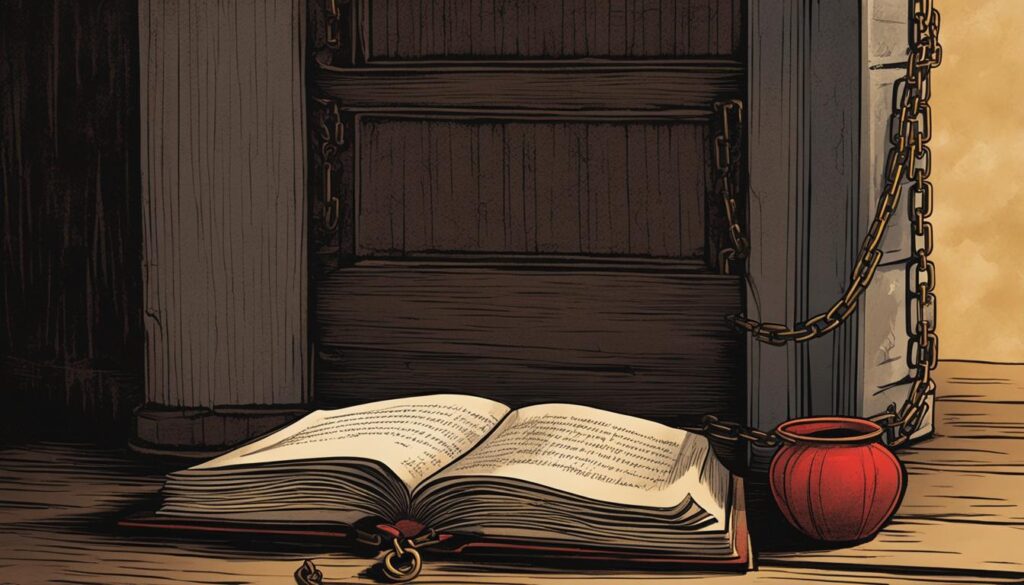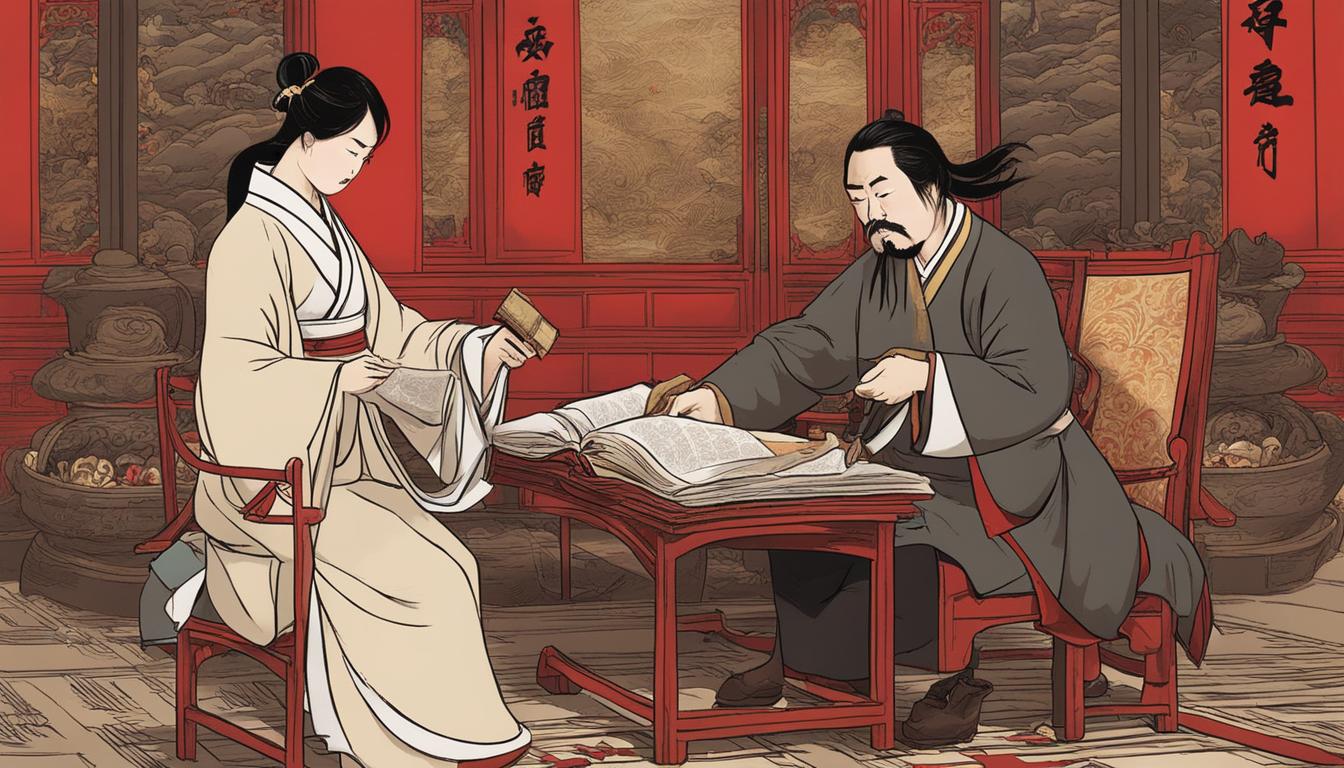Welcome to our article providing an in-depth analysis of Dai Sijie’s acclaimed novel, “Balzac and the Little Chinese Seamstress”. In this piece, we will explore the key themes, characters, plot, and literary techniques utilized by the author to create a thought-provoking and engaging story. Published in 2000, this book quickly became a global bestseller and has since been translated into more than 25 languages. The novel is a beautiful homage to literature’s power in shaping individuals’ lives, set against the backdrop of China’s Cultural Revolution. In the following sections, we will delve into the critical aspects of this fascinating work of literature.”
Introduction to “Balzac and the Little Chinese Seamstress”
“Balzac and the Little Chinese Seamstress” is a novel by Dai Sijie set during the Chinese Cultural Revolution. The revolution, which lasted from 1966 to 1976, was a period of massive social and political upheaval in China. During this time, Mao Zedong encouraged young people to “purge the class ranks” and fight against the “Four Olds” – old ideas, old culture, old customs, and old habits. The novel focuses on two teenage boys, Luo and Ma, who are sent to a remote mountain village for “re-education.”
The sequel follows their interactions with the local community and their growing relationships with the title character, the village headman’s daughter, the Little Chinese Seamstress. As they introduce her to forbidden Western literature, their lives are changed irrevocably.
The novel’s portrayal of the Chinese Cultural Revolution offers readers a glimpse into the struggles of the Chinese people during this turbulent period of history. Dai Sijie’s evocative writing style and use of literary techniques create a rich tapestry of characters and themes that resonate with readers around the world. In the following sections, we will explore this novel in detail, examining its major characters, plot, themes, symbolism, writing style, historical context, and critical reception.
Main Characters in “Balzac and the Little Chinese Seamstress”
Dai Sijie’s novel, “Balzac and the Little Chinese Seamstress,” features three main characters: Luo, the Narrator, and the Little Seamstress. Throughout the story, their relationships and desires unfold, revealing their emotional growth and personal transformations.
Luo and the Narrator are two teenage boys who have been sent to a remote mountain village for “re-education” during the Chinese Cultural Revolution. They come from city families and have a love for literature. They develop a close bond and partner together to educate themselves on new literary works that they discover in their environment.
The Little Seamstress is a young village girl with a natural beauty that immediately captivates Luo and the Narrator. The novel revolves around their relationship with her, as they aim to educate her and introduce her to new literary works. She too eagerly learns and grows alongside them.
Throughout the narrative, Dai Sijie presents these characters with rich cultural backgrounds and complex motivations that allow the reader to fully immerse themselves in their experiences. The protagonists are highly relatable and endearing, and their personal growth and stories make “Balzac and the Little Chinese Seamstress” a must-read novel.
Plot Summary of “Balzac and the Little Chinese Seamstress”
Set during the Chinese Cultural Revolution, “Balzac and the Little Chinese Seamstress” tells the story of two teenage boys, Ma and Luo, who are sent to a rural village for “re-education.” There, they discover a hidden stash of Western literature, which includes works by Balzac, Hugo, and Stendhal. The boys become fascinated with these forbidden books and decide to share them with a local girl, the Little Chinese Seamstress. In the process, they begin to fall in love with her and compete for her attention.
As the boys’ relationship with the Seamstress deepens, they become increasingly aware of their desire for freedom and self-expression. When the Seamstress becomes pregnant, they hatch a plan to take her to the city for an abortion. However, their scheme is ultimately thwarted by the authorities, and the boys are forced to return home, leaving the Seamstress behind.
The novel offers a poignant exploration of the power of literature and the constraints imposed on intellectual freedom during a tumultuous period of Chinese history. Through the experiences of Ma, Luo, and the Little Chinese Seamstress, Dai Sijie creates a captivating story that resonates with readers around the world.
Themes Explored in “Balzac and the Little Chinese Seamstress”
Dai Sijie’s novel “Balzac and the Little Chinese Seamstress” explores several themes that reflect the impact of the Chinese Cultural Revolution on society. One of the most prominent themes in the novel is cultural assimilation, as the two protagonists struggle to navigate their traditional upbringing amidst the political turmoil of the Maoist regime.
Forbidden literature also plays a significant role in the story, as the characters discover the power of books and their ability to offer an escape from their bleak reality. The restrictions imposed on intellectual freedom are explored through the harsh punishment faced by the characters for reading and owning western literature.
Another literary theme examined in the novel is the transformative power of literature, as the two main characters undergo a personal evolution through their shared love of books. This is highlighted through their literacy lessons and discussions on the works of French novelist Honore de Balzac, which offers a contrast to their limited education driven by the Communist regime.

The novel ultimately offers a thought-provoking exploration of these themes, offering insight into the complexities of cultural identity and political oppression.
Symbolism in “Balzac and the Little Chinese Seamstress”
Dai Sijie’s novel “Balzac and the Little Chinese Seamstress” features rich symbolic elements that add a deeper meaning to the story. For instance, the Little Seamstress, the protagonist, represents the oppressed Chinese society, eager to learn but restricted from accessing forbidden books. The books themselves, especially Balzac’s works, symbolize the power of literature in liberating the mind and nurturing intellectual growth. Furthermore, the violin, a treasured possession of one of the characters, represents a source of inspiration, a way to escape the harsh reality of their lives.
“They were protected by the hills, cocooned in a nest of books, like an embryonic falcon awaiting the right time to break free of its shell.”
The imagery created by Dai Sijie is equally impressive. Throughout the novel, the mountains and landscape of rural China are depicted with vivid and detailed descriptions that capture the essence of simplicity and natural beauty. The characters’ clothes and how they interact with each other are also heavily symbolic of their backgrounds and beliefs. For example, their traditional outfits and the use of Mandarin language reflect their rural and traditional roots, while the adoption of Western fashion and French language convey their desire for cultural assimilation and modernization.
The novel’s use of symbolic elements and imagery offers a multi-layered reading experience that enriches the story and provokes thoughtful analysis. It highlights Dai Sijie’s exceptional writing skills and his ability to convey messages beyond the words on the page.
Writing Style and Language in “Balzac and the Little Chinese Seamstress”
Dai Sijie’s writing style in “Balzac and the Little Chinese Seamstress” is characterized by its vivid imagery and varied literary techniques. The author skillfully utilizes metaphor and symbolism to create a rich and meaningful narrative that immerses readers in the story’s setting.
One notable aspect of Sijie’s writing style is his use of language to convey the emotional depth of the story. Through carefully crafted sentences and descriptive language, Sijie transports readers to the heart of the cultural revolution, evoking a sense of time and place that draws the reader in.
“As the sun went down and the sky turned red the Western Mountains disappeared into the horizon. Everything was peaceful, only the sound of the stream remained and it was as if this were a painting.” – Dai Sijie, Balzac and the Little Chinese Seamstress
Another literary technique that Sijie employs is the use of allusion, referencing classic literature to further strengthen the book’s themes. The use of allusion is most apparent in the title of the novel, which echoes the works of French writer Honore de Balzac and pays tribute to the power of literature to transcend borders and connect people.
“Balzac and the Little Chinese Seamstress” is a remarkable example of a literary work that seamlessly blends evocative language, experimental structure, and masterful storytelling to convey a powerful message on the importance of literature in our lives.
Critical Reception of “Balzac and the Little Chinese Seamstress”
Following its publication, “Balzac and the Little Chinese Seamstress” received widespread critical acclaim for its poignant story, rich characters, and powerful themes. Many reviewers praised Dai Sijie’s lyrical prose and skill in crafting a narrative that touches on complex issues such as the importance of education, censorship, and the impact of political upheaval on a generation.
“Dai Sijie’s novel can be seen as an allegory for the dangers of censorship and the necessity of literature in fostering human empathy and connection,”
wrote “The New York Times Book Review”. Reviewers from “Publishers Weekly”, “The Guardian”, and “Kirkus Reviews” also lauded the novel’s tender portrayal of the transformative power of literature in a tumultuous time in Chinese history.
Despite its overwhelming critical success, some reviewers have criticized the novel for its lack of historical accuracy, particularly in regard to the portrayal of the cultural revolution. For example, one review in “The New York Review of Books” suggests that the novel presents a whitewashed or romanticized version of this period of China’s history.
However, despite the mixed reviews on its historical accuracy, “Balzac and the Little Chinese Seamstress” remains a beloved favorite of readers around the world, and continues to be discussed and analyzed in literary circles today.
Cultural and Historical Significance of “Balzac and the Little Chinese Seamstress”
The novel “Balzac and the Little Chinese Seamstress” is set during the Chinese Cultural Revolution, a tumultuous period in China’s history that lasted from 1966 to 1976. The revolution sought to promote the ideals of communism and eliminate traditional beliefs and systems, resulting in widespread violence, political persecution, and cultural suppression.
The novel provides insight into the impact of the Chinese Cultural Revolution on society, particularly its effects on intellectual freedom and creative expression. Through the story of the two young protagonists, Dai Sijie describes the importance of literature, music, and art as a means of seeking refuge and individuality, in a system that prohibits all forms of artistic expression.
The portrayal of the Cultural Revolution in “Balzac and the Little Chinese Seamstress” is reflective of the experiences of many who lived through this oppressive period in Chinese history. It underscores the importance of preserving cultural identity, and the invaluable role that literature can play as a means of resisting political oppression and promoting human dignity.
Conclusion
In conclusion, “Balzac and the Little Chinese Seamstress” by Dai Sijie is a captivating novel that explores the human experience during a time of political upheaval and social change. Through the eyes of its protagonists, the novel illuminates the inner struggles of individuals who are caught between the restrictions of tradition and the freedom of expression.
The novel’s themes of cultural assimilation, intellectual freedom, and the transformative power of literature are skillfully woven into the narrative through the use of rich symbolism and evocative language. Dai Sijie’s writing style and literary techniques effectively convey the story’s emotions and messages, making “Balzac and the Little Chinese Seamstress” a literary masterpiece.
Throughout this article, we have explored the key aspects of the novel, including its plot, characters, themes, symbolism, writing style, and critical reception. We have also discussed its cultural and historical significance, particularly in its portrayal of the Chinese Cultural Revolution and its lasting impact on society.
Overall, “Balzac and the Little Chinese Seamstress” is a remarkable work of literature that offers a unique perspective on a pivotal moment in history. Its enduring relevance and universal themes make it a must-read for anyone interested in the power of literature to transform lives and shape society.



